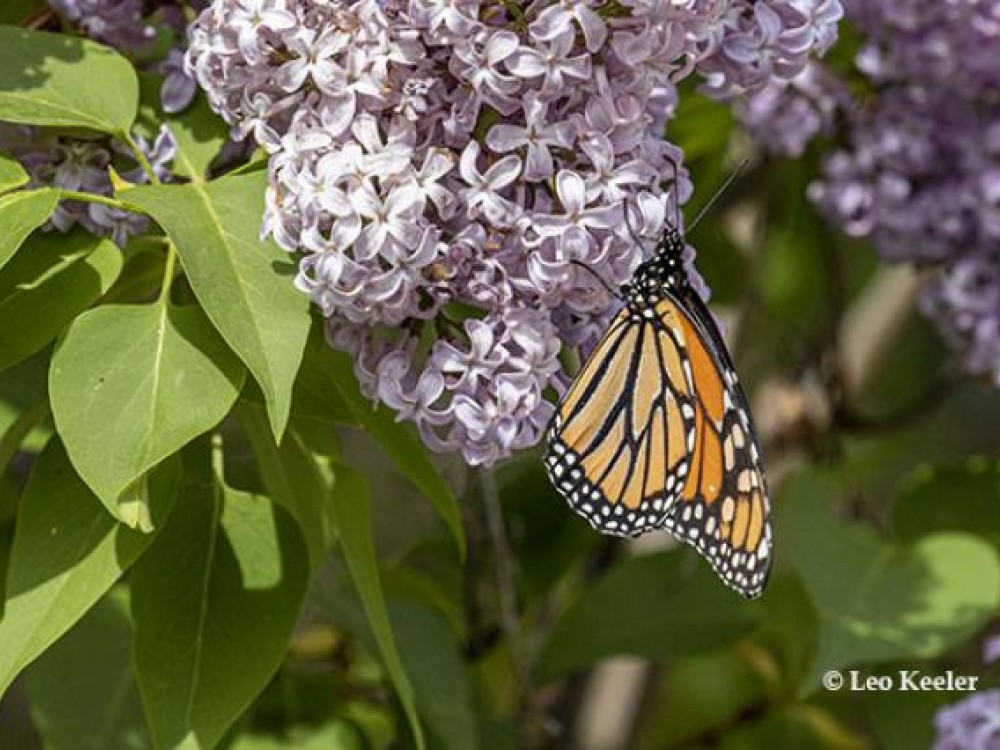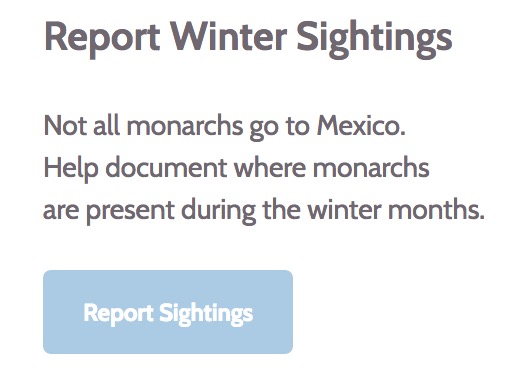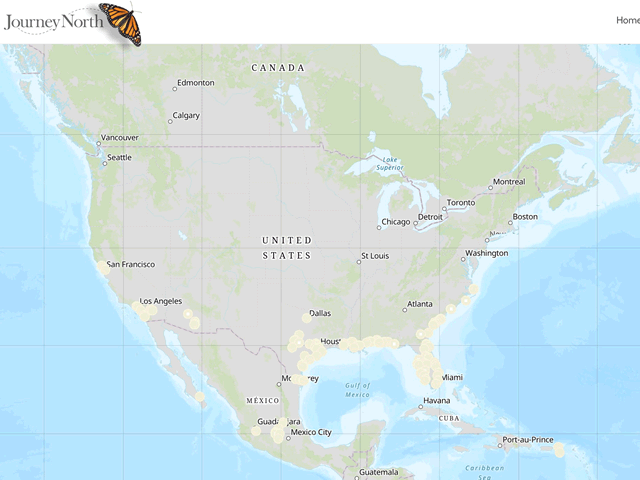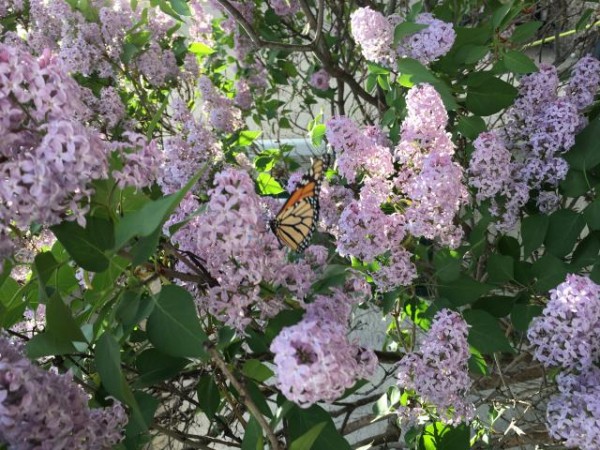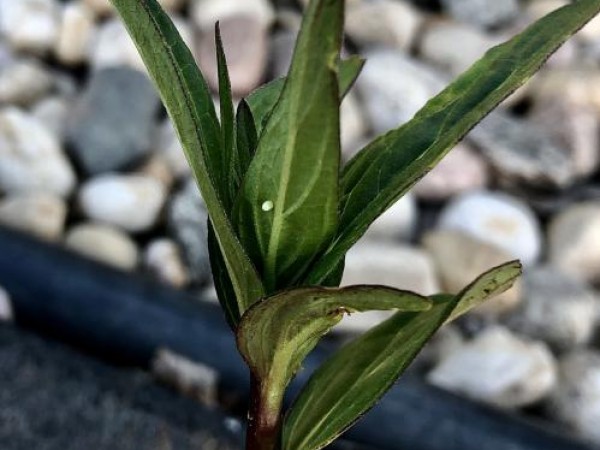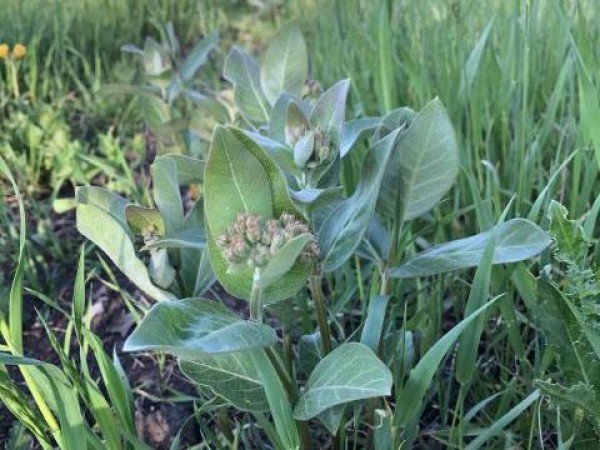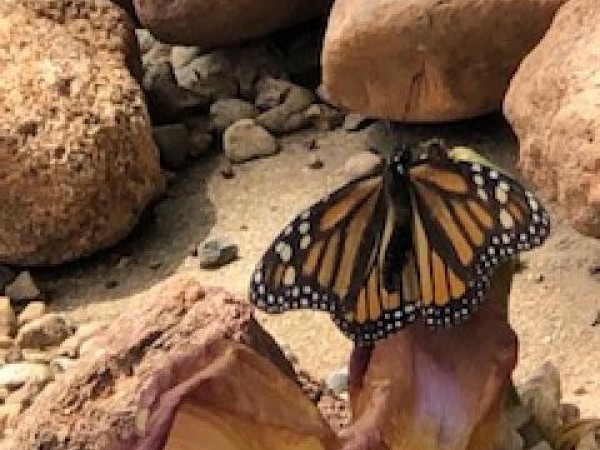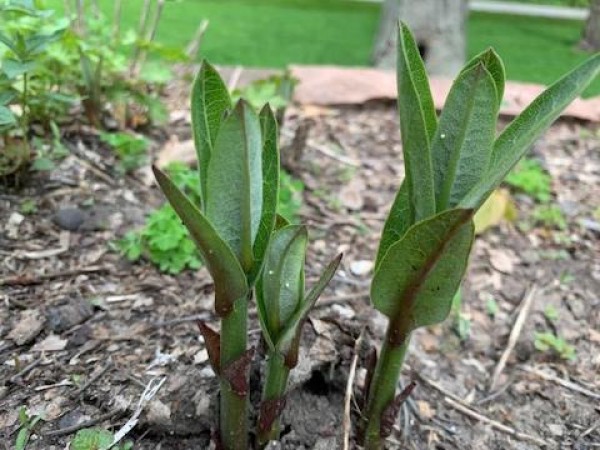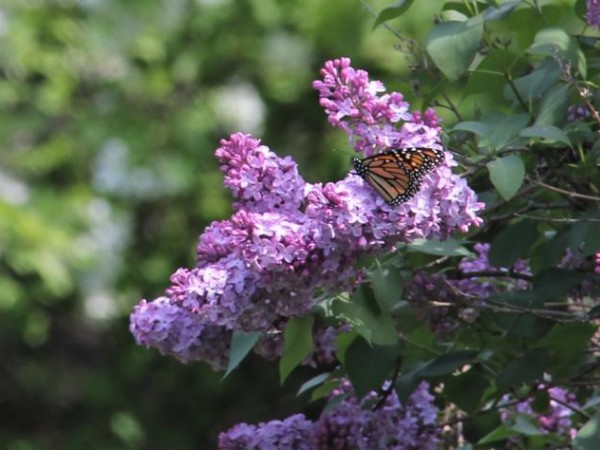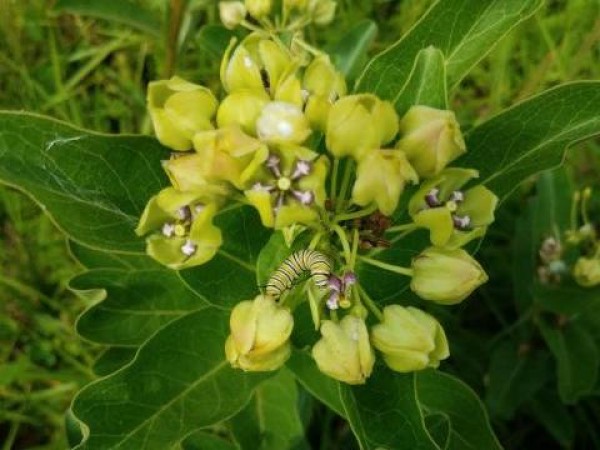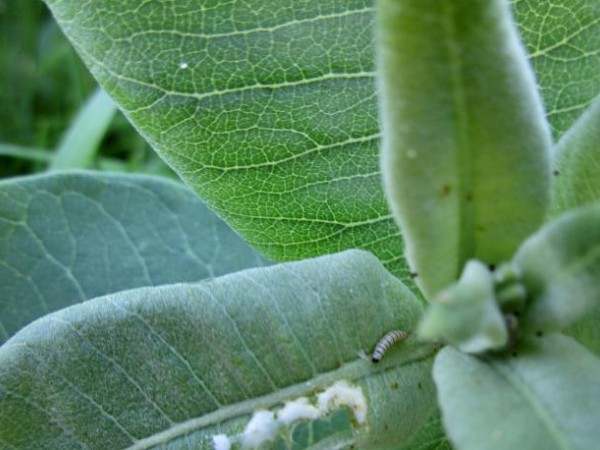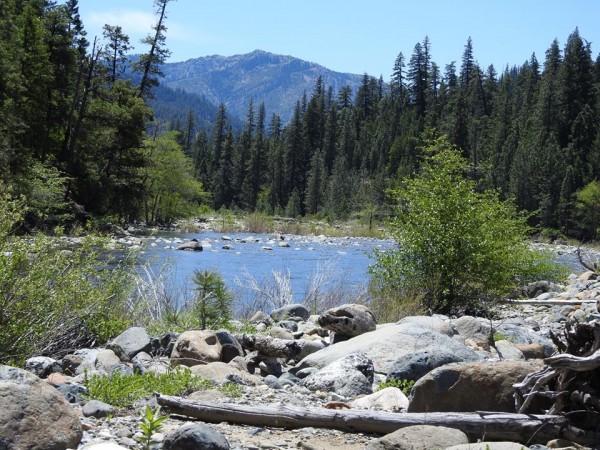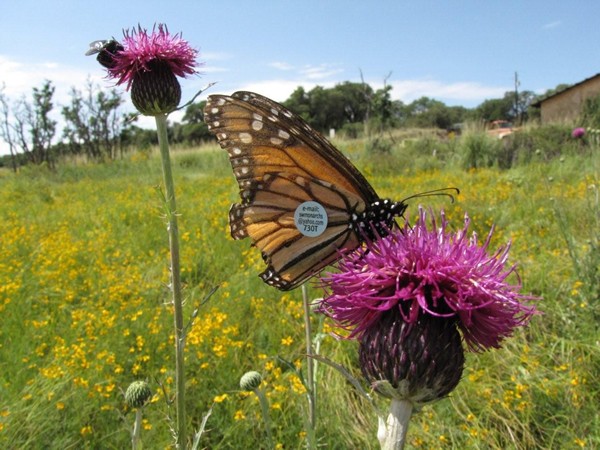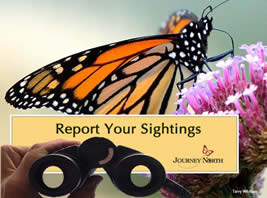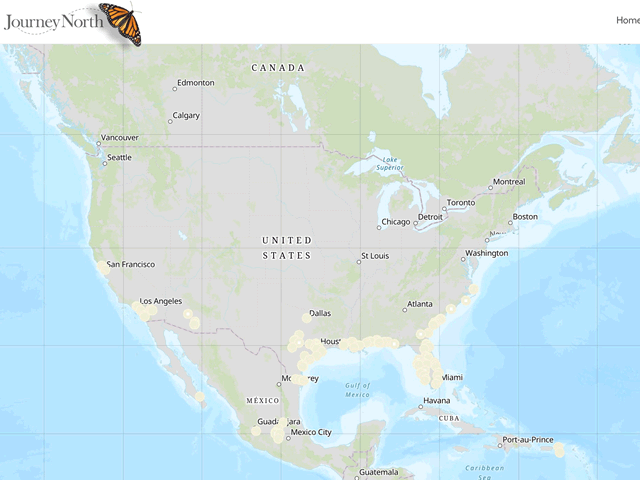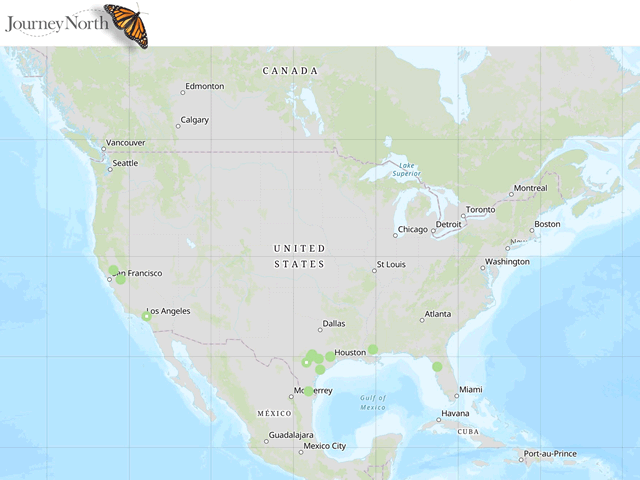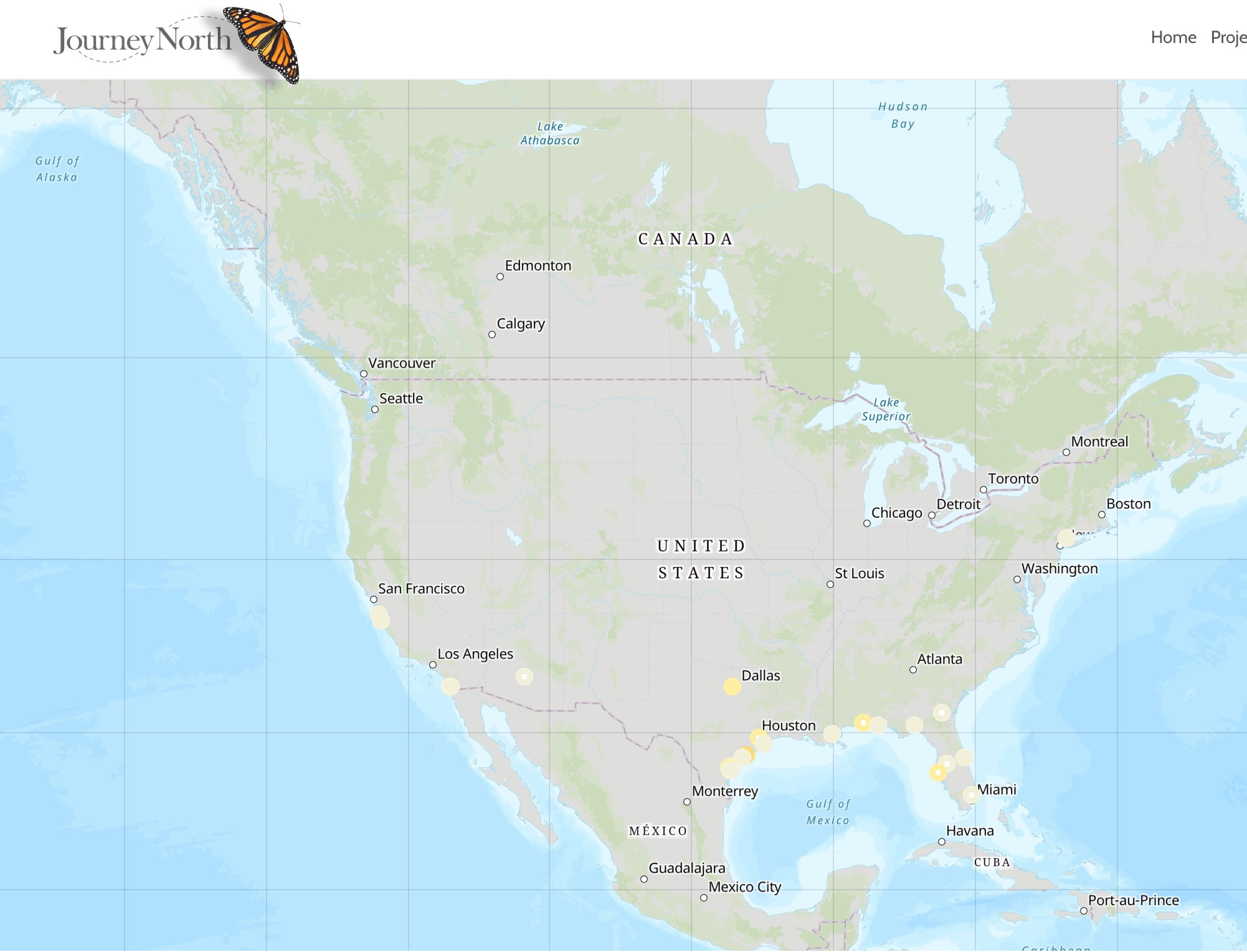Nearing Northern Limits
Only one more week for our monarch news updates. Keep reporting as monarchs near the northern limits of their breeding territories.
Eastern Population of Monarchs
Almost There...
Monarch first sightings have been reported in southern Manitoba at the 49st parallel north. However, at the 51st parallel north, Journey North citizen scientists await their first monarch sightings even as they report milkweed emergence.
From Winnipeg, MB: Moira and her husband were startled by a monarch that stopped to nectar on their Lilac. "Big and beautiful. While the first one was nectaring a second one arrived and I saw both of them together. Very exciting as I rarely see 2 together." (06/03/2020)
From Winnipeg, MB: Yan submitted this report, "My daughter saw one near our yard yesterday and one flying around our milkweed garden today. Her observation was confirmed today. We found many eggs tonight. Almost every plant has an egg on it..." (05/31/2020)
From Dauphin RM, MB: Mary J. observed Dwarf milkweed buds but "no Monarch sightings as yet". (06/01/2020)
First sightings of monarchs have been reported in Montana, Wyoming and the front range of Colorado.
From Emigrant, MT: Dorothy reported that the "lilacs are in full bloom, and this monarch was the first to find them." (06/03/2020)
From Sheridan, WY: Peter, "Got a photo of the beauty this time on the lilacs!" (06/02/2020)
From Louisville, CO: Deborah reported, "I have milkweed in my garden that the monarch visited and then flew to the iris to rest - allowing me to take my pic." (06/01/2020)
In the east, monarchs have yet to reach the Canadian provinces of Quebec, New Brunswick, Prince Edward Island and Nova Scotia. Maine still has only one report of a first monarch sighting. At this time last year, there were several first sightings in the Maritimes. Check out the Journey North Monarch Adult (FIRST sighting) map from 2019 and compare.
Generation Two
Females are laying eggs of the 2nd generation now. These monarchs will be the grandchildren of butterflies that overwintered in Mexico. Monarch generations are continuing the cycle. It takes about one month for each to develop. Over the summer, three generations will be produced in the north.
- June: grandchildren
- July: great-grandchildren
- August: great-great-grandchildren—the generation that migrates to Mexico.
Throughout the upper mid-west of the US and into the Canadian province of Ontario, citizen scientist continue to report first monarch sightings as well as first sightings of monarch eggs. Observers in the northern reaches of this region still worry about milkweed abundance.
From Elm Grove, WI: Jennifer noted her first monarch butterfly sighting and commented, "Observed female butterfly flying through the garden for over 15 min. She made 5+ circuits through the garden and laid a single egg on common milkweed plants. All plants in the garden were less than 12" tall, most about 6-8" tall. Butterfly rested several minutes on a plant before flying off to the neighbor's yard. Butterfly did not appear to lay eggs on the swamp milkweed plants in the garden." (05/25/2020)
From Tarbutt and Tarbutt Additional, ON: Michele noted, "Milkweed still small and not really abundant yet." (06/03/2020)
In central US, monarch caterpillars sightings range from Arkansas to Wisconsin and even into Minnesota. No caterpillar sightings yet in the Ontario.
From West Fork, AR: Jane, "saw one monarch larva on Asclepias viridis, and 11 monarch larvae on Asclepias purpurascens. All milkweeds were in pastures that we are turning into pollinator/monarch habitat. No larvae noted on Asclepias tuberosa or common milkweed. First sightings of larvae on Asclepias viridis were May 20th, with several subsequent sightings. First sightings of larvae on A. pupuescens were yesterday." (06/01/2020)
From Fish Creek, WI: Judie reported, "While walking on our property l looked at common milkweed where I had previously seen monarch eggs. Today I found the first monarch larvae! I also saw many more eggs." (06/03/2020)
From Allenton, WI: Darleen noted her first of the year monarch caterpillars on common milkweed. 06/03/2020
Western Monarch Population Migration News
Gail Morris, Coordinator of the Southwest Monarch Study, provides an update on the Western Monarch Population in her weekly report. This week Gail writes in her fourteenth report:
Monarchs on the move!
Monarchs are moving quickly north and east and hopefully will soon reach Washington and Idaho. They’re already stretching through California, Oregon and Utah, but Dr. David James’s hopes for a large summer monarch population floating into the state of Washington were dashed by his recent annual trip to the Northern California breeding grounds. Read more
Plant Pollinator Gardens and Keep Reporting to Journey North
Nectar is important for migration, but monarchs need nectar during the breeding season, too. Females produce hundreds of eggs and travel widely in search of milkweed. Males fly across the landscape in search of females, patrol patches of milkweed, and produce energy-rich spermataphores to deliver to females during mating. Do some research to find nectar-rich flowers that grow well in your region. Pay attention to flowering dates so you can provide nectar for monarchs from the time they arrive in the spring until they migrate south in the fall. Monarchs need milkweed, but they need nectar plants too.
Continue to report monarchs, monarch eggs, monarch caterpillars and milkweed.
Monarchs & Milkweed Spring / Summer Maps
After FIRST sightings, please report:
- Monarch Adult Sighted
- Milkweed Sighted
- Monarch Egg Sighted
- Monarch Larva Sighted
- Monarch (OTHER observations) *including behaviors such as mating and nectaring

